




 |
   |
 |
N.Æ. (Poland) see: |
 |
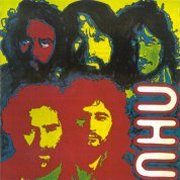 |
NHU (1978, 39.21) ***½/½Na Terra do Verde ChanA Titritada Friky & Alexo Doente Hay un Tren A Trancas e Barrancas |
Current availability:
Mellotron used:
From Galicia/Galiza, in the north-west of Spain, NHU (Noche Hermosa Una, or A Beautiful Night) were a psychedelically-inclined progressive outfit who released just the one eponymous album at the height of Spain's late-flowering prog scene. Its organ-heavy sound hasn't dated that well, to be honest, though the material's good; like so many progressive albums, there are no bad tracks per se, only varying levels of 'fairly good'. Unlike many of their contemporaries, there's absolutely no flamenco influence in NHU's sound whatsoever, their style being more early-'70s post-psych, but if you're a Spanish prog devotee, don't let that put you off. Highlights? Hard to say, although opener Na Terra Do Verde Chan catches the ear quite nicely.
The unknown organist (members are listed, roles are not) plays Mellotron strings, briefly but forcefully, on Hay Un Tren, although that seems to be your lot on the Mellotron front. So; NHU's a good album without being at all outstanding. Put it on your prog wants 'B' list.
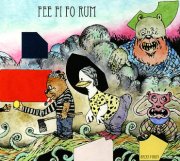 |
Fee Fi Fo Rum (2012, 54.55) ***/½Fanfarum for ForumBorkum Riff Jimmy Buss 446 Dinner With Inner Yasuragi Gluck Occasions Fanfarum for Electric Forum |
Current availability:
Mellotron used:
Swedish avant-jazzers Nacka Forum (who appear to be a part-time proposition for four busy musicians) have been around for a decade or so at the time of writing. Their third album, 2012's Fee Fi Fo Rum, is pretty hard going for non-avant-jazzers, frankly; its more straightforward material (lengthy opener Fanfarum For Forum, Jimmy) is perfectly listenable for 'regular' jazzbos, but when they head off-piste (Borkum Riff, Buss 446, Gluck), it all becomes rather more, er, 'difficult'.
Saxophonist Jonas Kullhammar doubles on keys, including a MiniMoog (audible on Occasions and closer Fanfarum For Electric Forum) and the expected, the sleevenotes stating: "And special thanks to Opeth for letting us use your Mellotron!" It seems (thanks, Jonas) that Nacka Forum were recording in the same studio the day after non-Mellotron owners Opeth had been in and were told they could use the MkVI. Although I initially thought it was inaudible, it turns out to have provided the heavily-pitchbent vibes on Yasuragi, treated by sticking it through a Roland Space Echo. As The Bonzo Dog (Doo-Dah) Band once said, 'Jazz: Delicious Hot, Disgusting Cold'.
 |
The True World (1999, 79.02) **½/T½ |
|
| The True World Wonder Fall of Evening Time Far Cry Twlights Will She |
The True Sun Space Between I & I Gone Mourn Anxiety Rest |
|
 |
Feel (2002, 62.28) **½/T |
|
| The New World Song About a River-Crossing Song We Strength of the Wind Piho Morning Glory Speed of the Fish Strength of the Waves |
Song for Malo Stars |
|
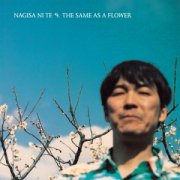 |
The Same as a Flower (2004, 50.39) ***/T½The Same as a FlowerThreads of Souls River A Light Wife Bramble Beyond the Grass After a Song Hope |
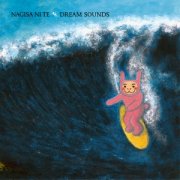 |
Dream Sounds (2005, 41.41) ***/TThe True WorldAnxiety Me, on the Beach The True Sun |
Current availability:
Mellotrons/Chamberlins used:
Nagisa Ni te (On the Beach) have been fêted for some years now as psychedelia's Next Big Thing, meaning that when I finally heard them, I was a little underwhelmed. They're basically the duo of Shinji Shibayama and Masako Takeda, who provide the male-female vocal dynamic, plus whoever else they need to realise their vision. Their music is probably best described as a modern take on wyrd folk, or the acoustic end of late '60s psych, complete with rather iffy vocal and instrumental intonation, unfortunately. 1999's The True World is their first tape-replay effort, conforming admirably to the above description, which makes its near-eighty minutes (it's actually a two-disc set) a good double its comfortable length, the nearest it gets to a highlight being parts of the jammed-out The True Sun. Takeda's Mellotron finally rears its ugly head with an exceedingly skronky cello part on Will, full of wobbly notes and tuning issues, plus a brief string part on The True Sun and a flute line on Space Between I & I.
2002's Feel is somewhat overlong for its content, causing this listener to run out of patience after forty minutes or so. I can only assume that considerable substance intake is recommended before playing, as the album crawls through ten tracks of tuneless acoustic psych, complete with dodgy recorder solos and the like. Best moment? The acid-drenched (reviewer cliché alert) guitar work on closer Stars, for what it's worth. Takeda plays Mellotron, while Shibayama plays Mellotron and Chamberlin (I've no idea where the band sourced one, assuming it's real), with strings on opener The New World and the oddly-titled Song About A River-Crossing Song, nowhere near enough to make this worth hearing on that account.
Their sixth full album, the rather dreary 2004's The Same as a Flower, has its moments; perhaps its rather downbeat approach can be seen as 'transcendent' if you're in the right frame of mind? It's mostly one-paced (slow), with little development of musical themes, concentrating more on its lyrical content, I suspect. Tape-replay credits are the same as Feel, lush strings and obvious brass (complete with key-click) on the lengthy Bramble and flute and strings at the end of After A Song. My guess is that the instruments were added in one take, played together by the duo, which would probably mean that the strings are Chamby and the brass and flute, Mellotron. The following year's Dream Sounds is a slightly different proposition, featuring just four tracks over its forty-minute length, one of them 'side-long', in vinylspeak, although it's more a collection of disparate bits than a 'proper' piece, to be honest. Said track, The True Sun, deviates from their usual template a few minutes in, when the drums and lead guitar kick in, although the pace remains as funereal as ever. Shibayama on Mellotron this time round, with strings on Me, On The Beach and The True Sun, although less vibrantly than on The Same as a Flower.
 |
Fureai (1974, 42.32) **½/T½ |
|
| Shiroi Shashin-kan Warauga ī sa Natsunoowari Inaka Kyōshi Omoide no Kata Sumi ni Fureai Yakō Ressha Denmāku no Nōjō |
Ore no Chihō no Komori-uta Ton Ton Gogatsu no Kaze ga Sora wa Kanashimi o Tatae Nekoze no Aitsu |
|
Current availability:
Mellotron used:
Masatoshi Nakamura's debut LP, 1974's Fureai, is a pretty typical Japanese release of its era, a slightly uneasy mix of slushy ballads and jaunty, mildly folk melody-influenced pop. Sound like your bag? Thought not. Any better tracks? Natsunoowari could be worse, likewise the folky title track and the upbeat, brassy Denmāku No Nōjō.
Mickie Yoshino plays obvious Mellotron, with flutes and lush, upfront chordal strings on Natsunoowari and a choppy flute part on Denmāku No Nōjō. Do you need to hear this? Obviously not, but at least the Mellotron's audible, making a nice change.
 |
7" (1972) **½/TT Marie Sainte Marie Coeur à Coeur |
Current availability:
Mellotron used:
Les Nanas were a Belgian female vocal trio, who, on top of two albums and a run of singles, worked as backing singers for other artists, in the manner of Clare Torry, Liza Strike et al.'s career, post-Dark Side of the Moon. 1972 7" Marie Sainte Marie strikes an uneasy balance between balladry and upbeat brassiness, although the flip, Coeur À Coeur, is, oddly, rather better, an upbeat Euro-pop number, no cheesier than many others of the era.
An unknown studio musician plays Mellotron strings on Coeur À Coeur, albeit not in the expected 'orchestral replacement' manner, more block chords all over the second half of the track. Do you need to hear this? Probably not, but it's on YouTube if you feel the urge.
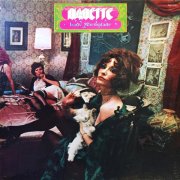 |
Lady Marmalade (1975, 34.27) ***/TBaby BoomPas Fou Rappelle-toi Lady Marmalade Lâche-Moi Danser, Danser Dis Que Tu M'Aimes, Too Super Lady Shame on You |
Current availability:
Mellotron used:
Although New York-born and Mississippi-raised, Nanette Workman has spent her professional life in Québec, mostly performing in French. 1975's Lady Marmalade was something like her sixth album, the title track having already been a hit for Labelle the previous year. Would'ja believe, it's actually halfway decent? I'd expected a total clunker, stuffed with light pop and wet balladry, but Pas Fou's hard rock boogie, the energetic Lâche-Moi and Super Lady's rock'n'roll have all confounded my expectations.
Morse Code's Christian Simard is credited with playing (presumably his own) Mellotron on two tracks, with cello and string parts on Rappelle-Toi's power-balladry, but nothing obvious on Danser, Danser. File under 'could be a whole lot worse'.
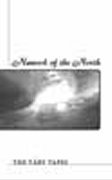 |
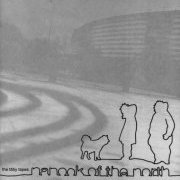 |
The Täby Tapes (2001/2004, 37.37) ****/TTT |
|
| Reaching the Shores of Arlanda Karin Boye's Grave Israel and Palestine - a Solution Nanook's Ark Phonecall St George and the Dragon Näsby Park Hey Fragile |
Where Will You Go? Nanook and the Beast The Explorer Forget it Jenny, Love is Just a Privilege for the Rich |
||
Current availability:
Mellotron used:
Änglagård's Mattias Olsson's latest project, Nanook of the North, specialise in (you guessed it) slightly melancholy pop with a retro sort of sound and twin male/female vocals (see: Reminder, Geller et al.). The band are named after the 1922 film (an early filmic attempt at understanding other cultures rather than just wiping them out) and have been favourably compared to Björk in various online reviews. Unless I'm entirely mistaken, The Täby Tapes crept out as long ago as 2001 as a cassette-only release, although the CD took another three years to appear. The above scan gives little idea of the sumptuousness of the packaging; pictures of some of the grottier areas of Stockholm (?) in midwinter are overlaid with layers of translucent 'tracing paper' containing lyrics etc., knocking your standard CD booklet into a cocked hat (so what exactly is a 'cocked hat', anyway and why would you wish to knock anything into it?). The album has some highly eccentric lyrics in places; what's all that stuff in Reaching The Shores Of Arlanda about "Mattias, play your omnichord"? The odd stuff just adds to the album's appeal for me; who wants 'normal'? Well, most people, I suppose, but I can dream, can't I?
Anyway, the mysterious "Nanook" (not Mattias, for what it's worth) plays Mellotron throughout, the most overt parts being the flutes on Nanook's Ark, Phonecall and St George And The Dragon, the strings on Where Will You Go? and a brief choir part on Nanook And The Beast. Mattias assures me that there are also various vibes and Mellotron piano parts, not to mention the oboe in Hey Fragile. Apparently, the 'distant orchestra' on Nanook's Ark comprises multiple Mellotron overdubs, including flutes, strings, cello, oboe, vibes, church organ and choir, amongst others. Anyway, the album itself is probably not for prog fundamentalists (you know who you are), but if you've heard and liked any of the man's other projects, you'll probably like this.
See: Änglagård | AK-Momo | Geller | Molesome | Pineforest Crunch | Reminder
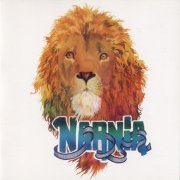 |
Aslan is Not a Tame Lion (1974, 36.32) ***/TTTYou'd Better Believe itMuddy Ground The Juggler Agapé To a Fountain Miracle of Birth In the Forest Boogie for Narnia Living Water |
Current availability:
Mellotron used:
Narnia were a one-shot female-fronted UK outfit, operating at the lightweight, folky end of the progressive spectrum, on 1974's Aslan is Not a Tame Lion. There's a Christian bent to a few tracks, notably Miracle Of Birth and In The Forest (hardly surprising, given their whole C.S. Lewis thing, I suppose). This is for those of you who like the quieter, simpler end of the '70s spectrum.
Keyboard man Peter Banks (no relation to the ex-Yes/Flash guitarist) plays Mellotron on four tracks, solid strings throughout their cover of Tom Paxton's You'd Better Believe It and Muddy Ground and flutes and strings on Agapé and To A Fountain, making this quite a Mellotron album, on the quiet. As I said, don't expect anything wildly exciting, but it's all competent enough with decent Mellotron.
 |
Nirvana 3 (1995?, 54.11) ***/TBolt From the BlueBitter is the Wind |
Current availability:
Mellotron used:
Narwal were an '80s/'90s Dutch outfit, including members of De Fabriek and Mekanik Kommando (later Use of Ashes), who released a slew of mostly cassette-only albums, many undated. Nirvana 3, possibly from 1995, is probably fairly typical of their output, consisting of two lengthy, side-long pieces of experimental synth/sampler work, percussion and vocalisations, loosely in an 'industrial' vein, before that meant 'crummy metal with samples and a turntablist'.
An uncredited musician, most likely Use of Ashes' Peter van Vliet, plays Mellotron, with chordal strings and solo choirs some eleven minutes into Bolt From The Blue and background choirs towards the end of the track. While I respect this music, I'm not entirely sure I actually like it, but what does my opinion matter? Use of Ashes fans interested in their roots should probably apply.
See: De Fabriek | The Use of Ashes
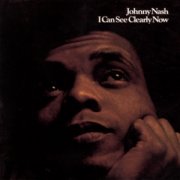 |
I Can See Clearly Now (1972, 34.10) ***/TTT |
|
| Stir it Up That's the Way We Get By Guava Jelly (It Was) So Nice While it Lasted Ooh Baby You've Been Good to Me You Poured Sugar on Me I Can See Clearly Now Comma Comma |
We're All Alike How Good it is The Fish and the Alley of Destruction There Are More Questions Than Answers |
|
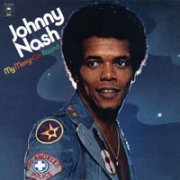 |
My Merry-Go-Round (1973, 36.56) **½/½ |
|
| My Merry-Go-Round Nice Time You Better Stop (Messing Around) Gonna Open Up My Heart Again Ooh, What a Feeling Love is Not a Game Loving You Yellow House |
(Oh Jesus) We're Trying to Get Back to You Salt Annie Ginger Tree |
|
Current availability:
Mellotrons used:
American Johnny Nash was the acceptable face of reggae in the early '70s, which isn't to dismiss his place in its history; indeed, he helped The Wailers out in the late '60s after visiting Jamaica, recording enough Bob Marley songs to help him on his way. Of course, Nash was, at heart, a soul singer and a bloody good one, but he's known to this day for his incursion into the world of reggae in the '70s. I Can See Clearly Now is best known for its catchy title track, but most of the album's material is pretty much on a par, including four Marley compositions. John "Rabbit" Bundrick plays keys on the album, including Hammond, MiniMoog and, of course, Mellotron, with flutes and strings (under real recorder) on Marley's Stir It Up and orchestral-ish strings on every other highlighted track, sounding very much as if it was used as a string section substitute, rather than as an instrument in its own right.
Nash's follow-up, the following year's My Merry-Go-Round, waters the reggae down to the point where it's pretty much a soul album played on the offbeat. Little of the material matches the best of its predecessor, opting for slushy ballads instead of statements of (admittedly fairly bland) intent like Stir It Up or The Fish And The Alley Of Destruction. No specific credits again, but a 'thanks' to Rabbit makes me heavily suspect he plays keys this time round, too. Most of the strings are real this time (bigger budget?), but it's definitely Mellotron on Loving You. Sadly, Johnny Nash seems lost in the early '70s, despite his timeless voice and major role in the propagation of reggae, probably as his material sounds determinedly lightweight these days, compared to the biggest Jamaican names.
 |
Run to Ruin (2003, 31.09/33.38) ***½/0 (½) |
|
| We Never Talked I Say That I Will Go Regrets You Her and Me Superstar The Body On Teasing While We Talk |
[Japanese ed. adds: Shinpuru Ni] |
|
Current availability:
Chamberlin used:
LA native Nina Nastasia first came to the public's attention in the UK, when legendary BBC DJ John Peel (RIP) pushed her first album on his show. 2003's Run to Ruin was her third release, produced (or, as he preferred, 'recorded') by Steve Albini (also RIP), a sparse, mournful record, Nastasia's low-key voice and guitar accompanied on several tracks by a string quartet. Don't go expecting your standard string arrangements, though; their droning, Middle-Eastern approach on opener We Never Talked has little in common with the classical world. Highlights include We Never Talked, The Body and closer While We Talk, but nothing here lets the side down.
No tape-replay on the regular album, but, for an unknown reason (different recording session?), Paul Bryan (Aimee Mann, Norah Jones, a million others) adds Optigan and Chamberlin to the bonus track on the Japanese issue, Shinpuru Ni (Simpler Thoughts), a Japanese-language version of While We Talk, albeit barely any more than two or three string chords, around a minute in. Nastasia's confessional style (in a good way) shows far better known artists how it should be done, although I can't imagine it's been a route to fame and fortune.
See: Paul Bryan
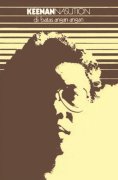 |
Di Batas Angan-Angan (1978, 53.01) **½/TTT |
|
| Nuansa Bening Jamrud Khatulistiwa Nyanyianmu Di Batas Angan-Angan Negeriku Cintaku Kau & Aku Adikku Buku Harian |
Hujan Menjala Citra Mungkin Jakarta Kusayang Cakrawala Senja Suara-Nya |
|
Current availability:
Mellotron used:
After forming Guruh Gypsy in the '60s and playing with them for over a decade, Keenan Nasution (who has links with Harry Sabar) recorded his first solo album, Di Batas Angan-Angan, only released on cassette, clearly the Indonesian format of choice. The bulk of the fifty-odd-minute release consists of very un-Indonesian-sounding cheesy Western balladry, exceptions including the near-nine-minute Negeriku Cintaku, easily the best thing here, which kicks off with an impressively pseudo-orchestral string synth/Mellotron part before shifting into 'epic ' mode and the rather odd Jakarta Kusayang, which could almost (note: only 'almost') be one of those quirky things from the first couple of PFM albums.
Keenan and Debby Nasution variously play Mellotron, albeit often fairly sparsely, with background strings on opener Nuansa Bening, upfront flute parts on Nyanyianmu and the title track, strings and choirs on Negeriku Cintaku, strings on Buku Harian, a flute line on Hujan, chordal choirs and strings and a flute line on Menjala Citra, choirs on Jakarta Kusayang and uncredited strings and flutes on Cakrawala Senja and flutes on closer Suara-Nya. Nasution released a nine-track vinyl/CD package, Dibatas Angan-Angan, in 2015, containing some of the original album along with new material, but a fair chunk of the Mellotron tracks are missing. It's what YouTube's for, folks...
 |
Nata (1978, 43.39) **½/T |
|
| Toi, la Musique et Moi Sad Limousine Don't Take Your Love Try If I Ever Lose This Heaven Tu Sais Que Je t'Aime Bien This Will Be Now I Know |
You're Leaving Me La Musique Sorry Seems to Be the Hardest Word Mr. Melody |
|
Current availability:
Mellotron used:
Well, I've tried my best, but I can't tell you a single thing about Bulgarian singer Nata, other than that she wasn't in the first flush of youth when she recorded her (lone?) LP, 1978's Nata. Sung in English and French, it seems to feature a mix of originals and covers, notably a faithful version of Elton John's Sorry Seems To Be The Hardest Word. Like many Bulgarian artists of the era who recorded at Sofia's Studio Balkanton, she was backed by the members of Formation Studio Balkanton (FSB), credited as 'the band', whose soul/funk moves display their skillset with aplomb, as their preferred genre, on their own early releases, was full-on prog.
FSB's Roumen Boyadjiev and Konstantin Tsekov play Mellotron alongside a string section, making it difficult to work out what's going on. Why did they even do it at all? To save on session fees for the simpler, chordal parts? Quite likely, actually. Anyway, as far as I can work out, we get orchestral-alike strings on the English-language Sad Limousine and background strings on Tu Sais Que Je T'Aime Bien and La Musique, although the flutes on closer Mr. Melody are probably real.
See: Formation Studio Balkanton
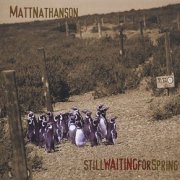 |
Still Waiting for Spring (1999, 30.15) **½/T |
|
| Parade Wings Lucky Boy Loud Answering Machine Then I'll Be Smiling More Than This Everything You Say Sounds Like Gospel |
Amazing Again Little Victories |
|
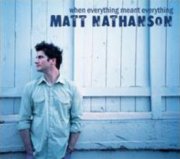 |
When Everything Meant Everything EP (2002, 17.31) **½/TTPretty the WorldFall to Pieces Princess Weight of it All Bent |
Current availability:
Mellotron/Chamberlins used:
It seems Matt Nathanson sidestepped the 'join a band' thing and went straight into a solo career (how do people do this?), releasing his first album as far back as 1993. '99's Still Waiting for Spring is his fourth, best described as chirpy pop/rock alternating with ballads, of the kind that irritates non-aficionados after, well, usually a couple of minutes, to be honest. It's harmless, as far as these things go, but it drags rather, a harsh accusation for an album only half an hour long. Counting Crows' Charlie Gillingham plays Mellotron and Chamberlin, with what sounds like (Chamby?) cellos under the real one on Loud and a major (Mellotron?) flute part on Everything You Say Sounds Like Gospel.
Nathanson's next release was an EP in 2002, When Everything Meant Everything, essentially more of the same, or should that be less? Jason Borger on Chamberlin this time round, with a string part on Fall To Pieces and upfront flutes on Weight Of It All, making it more tape-replay heavy than its full-length predecessor. All rather dullsville if you're not into this stuff, then, but one great tape-replay track in Everything You Say Sounds Like Gospel.
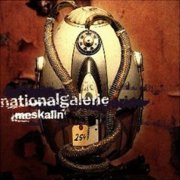 |
Meskalin (1995, 42.12) ***/TT |
|
| Tränen in Mein Herz In Wien Tütensuppe Zombie Hungrig Alles Star Entmaterialisieren Sperrangelweitoffen |
Immer Wieder Sonntags Hier und Übermorgen Bis Ans Andere Ende der Welt |
|
Current availability:
Mellotron used:
As far as I can work out, Nationalgalerie were a German (-language) alt.rock outfit from the early '90s, who released four albums over a five-year period. The last of these, 1995's Meskalin, is one of those inoffensive, strangely characterless albums that rarely actually inspire anyone to really like or dislike them, which might explain why the band split soon afterwards. The nearest it gets to a standout track is the Oriental-esque Tütensuppe, but, despite its sensible length, it still rather outstays its welcome towards the end.
Christian "Reverend Ch. D" Dabeler plays Mellotron, with skronky strings on In Wien, a similarly cracked flute melody on Sperrangelweitoffen and cello and strings on Hier Und Übermorgen, the album's top Mellotron track. This really isn't a very exciting release, if truth be told, but its Mellotron tracks are perfectly pleasant, if rather undemanding.
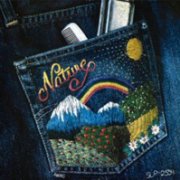 |
Earthmover (1974, 37.21) ***/TT |
|
| Lookin' for Rock'n'Roll Going Home Summer in the City 20th Century Kid Mystery Brew Midnight Dreamer Meating One Room Country Shack |
Follow My Heart This Wheel's on Fire |
|
Current availability:
Mellotron used:
Sweden's Nature were one of those mid-'70s bands who tried to be all things to all men, going by their second album, 1974's Earthmover. This has a bit of everything; rock'n'roll-by-numbers (opener Lookin' For Rock'n'Roll, Midnight Dreamer), pop/rock (20th Century Kid, Meating), blues-rock (One Room Country Shack) and covers (The Lovin' Spoonful's Summer In The City, Dylan's This Wheel's On Fire), not to mention the odd, percussive Going Home and by far and away its best track, psychedelic mini-epic Mystery Brew, complete with a superb, properly ripping guitar solo. Perplexing.
Björn J:son Lindh (a man with his own lengthy history) plays Mellotron, with string and flute parts on Summer In The City, Mystery Brew and Follow My Heart. Is this worth hearing? Just about, mainly for Mystery Brew and some of the Mellotron work, although an album this short containing this much filler can't really be called a success.
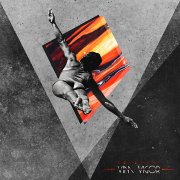 |
Vim & Vigor (2014, 48.03) ***/T |
|
| Time Brother Smash'n Grab it Black and Blue Gimme a Shot Psycho Vaquero Indigo Blue Murder and Misery |
Leave Wander Bottom Line |
|
Current availability:
Mellotron used:
Dutch band Overthrow were mentored by Golden Earring, who renamed them The Guns of Navarone, quickly shortened to Navarone. I have trouble with metal's multifarious sub-genres, but this lot sound like an out-of-time '90s band to my ears: downtuned riffs, nu-metal feel... Thankfully, their second album, 2014's Vim & Vigor, features far more variety than that; many of its tracks only use metal tropes for emphasis, while Wander has more of a pop-rock vibe, closer Bottom Line is a bluesy ballad and, best of all, Psycho Vaquero sounds like Pink Floyd, had David Gilmour been replaced by a mariachi trumpet player.
Ruud Peeters and Merlijn Nash play Peeters' M400 on a couple of tracks, with choirs and strings on Psycho Vaquero, brief background strings on Murder And Misery and more upfront ones on Leave. While not something I'm ever going to love, this is a perfectly competent album with a smattering of genuine Mellotron, which is probably as much as we can ask for these days.
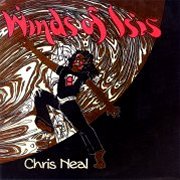 |
Winds of Isis (1974, 41.39) ***½/TTTTPreludeInto the Valley of the Ancients - a Glimpse of Isis Full Moon Lightning - the Field Test Ritual Eternal - Initiation of the Searcher The Legend From the Castle the Winds Arose... Through the Corridors of Time, Including the March of the Undead - Temptation to Turn Back Carnival of the People - a Brief Respite Nightmare - Isis Unveiled Dance of the Astral Shadows - Beyond the Point of No Return Flight From the Unknown Ashes to Ashes |
Current availability:
Mellotron used:
These days Chris Neal seems to be mainly a composer of film scores, but, in the '70s, he produced one of Australia's first symphonic progressive albums. Winds of Isis is instrumental, with more than a hint of psych-throwback to it and an unusual melodic approach, quite possibly influenced by his interest in film music, possibly Hollywood musicals, too. He's more of a keyboard player than anything else, although he plays most of the instruments on the album, proving himself a capable guitarist and drummer. He lists all equipment on the back cover, which reads like a wish-list of mid-'70s keys and effects, using various Mu-Tron devices from the States, through which he sticks just about everything in sight.
Neal's Mellotron work is well over the top, every track heavy with very raw-sounding Mellotron; don't expect a two million buck production here... He lists choir/cellos/strings and uses all but the cellos extensively, usually in great chordal slabs stomping all over whatever else is going on at the time; almost the first sound you hear on the album is choir chords and he only ever lets up for a couple of minutes or so before slapping some more on. I've had to guess which parts of side two's The Legend contain Mellotron, as there's no timings for parts, so apologies if they're wrong. I've no idea if Neal produced anything else in the progressive field, although Discogs lists an earlier album and three later soundtracks. There seem to be several Chris Neals who've made their mark somewhere down the line, including an Abbey Road engineer, a modern country artist and a Mike + the Mechanics collaborator (collaborators usually get shot, don't they?), making online research difficult.
See: Marshall Brothers Band | Bob Hudson | John J. Francis
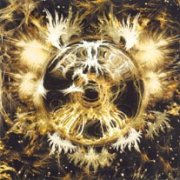 |
Nova Express (2002, 46.53) ****/TTTTBlackmailStimpy Bar Redrum Cinema 1920 Nova Express |
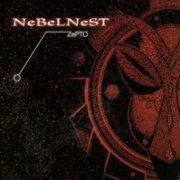 |
Zepto (2006, 46.14) ***½/TT½Pillars of BirthMajnuns The Old Ones The Thing in the Walls Fabric of Reality De Thriumpho Naturae Do What Thou Wilt Station 9 |
Current availability:
Mellotrons used:
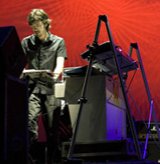 |
Nebelnest (or, as they seem to prefer, NeBeLNeST) released their first, self-titled album in '99, using Mellotron samples. An excellent record, sitting firmly in the Crimson/Anekdoten camp, it's a mixture of improvs and arranged pieces, well worth hearing. Three years on, they followed up with Nova Express, on Cuneiform (amusingly spelt 'CuNeiFoRM' on the spine), the band having noticeably tightened up their style, although the overall sound remains the same. This is wild, frequently improv'd music which whips up an impressive sonic maelstrom, all four musicians pushing themselves to the limit; I hear distinct comparisons with Britain's Guapo whose contemporaneous album was, coincidentally, also on Cuneiform.
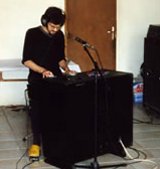 |
Keyboard man Olivier Tejedor wrote to me to confirm their Mellotron use on the album, although they used samples of some sounds, too. The choirs, cellos and flutes are played via a Kurzweil, but the strings, string section and vibes (strange combination!) are 'real', with particularly powerful strings on the excellent Stimpy Bar. For the record, more strings on Redrum, string section and strings on the title track and what must be vibes on Cinema 1920, although they're played at the sort of speed you wouldn't normally associate with the instrument. The flute samples turn up on Nova Express, sounding remarkably realistic, I have to say, although the few seconds of 'cellos' right at the end of the album are a bit manky. Mellotron highlight? Probably the choppy pitchbend work on Nova Express, where Tejedor goes completely off the rails, to the point of possibly being guilty of Mellotron torture.
Three years on, Zepto is, essentially, more of the same, both a good and a bad thing. Good because it's a good sound and bad because it seems the band haven't progressed very much in seven or eight years. I'm sure they'd argue that they have, but to the casual observer, Nebelnest and Zepto really aren't that different, all three of their albums being semi-improvised, instrumental, jazzy Crimsonesque stuff with more than a dash of RIO. Fabric Of Reality is the one track where they step outside the box, being a quiet, if unsettling piece, dominated by Tejedor's deliberately screechy violin glissandos and no Mellotron. Assuming Tejedor's using the same setup as on Nova Express, there are Mellotron strings on most tracks, with the odd flute sample thrown in and what I take to be his string section tapes on Majnuns, although I couldn't hear the vibes anywhere.
See: Samples etc. | Bob Drake
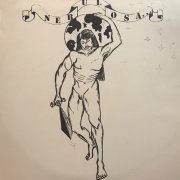 |
Nebulosa (1977, 43.21) ***½/TT |
|
| Dagen Gryr Strezz-Rock Mörka Tankar Digital Det Vackra Folket Undergång Ensam Nödrop |
Mittpelarna Tryckvåg Ödestrand Verklighetsflykt Apokalyps |
|
Current availability:
Mellotron used:
Nebulosa were your typical prog one-off from the '70s, Swedish division this time, rather than the usual Italian. Nebulosa is a reasonable enough album, although the band seemed to have trouble deciding what exactly they wanted to play, making for a slightly disjointed end product. Even in Sweden, 1977 wasn't exactly the height of the progressive movement, so it's not especially surprising that the band didn't get to record again. Much of the album's material is perfectly good, near-seven-minute Undergång being a highlight, although the white-boy funk of Nödrop and Mittpelarna really don't work in the context of the rest of the album.
Thomas Kascó's Mellotron doesn't rear its head until the choirs on track four, Digital, after which he can't seem to stop using it for the next few tracks, with particularly heavy use on Undergång, an almost constant strings backdrop, plus flutes and choirs. Faint flutes on Verklighetsflykt are the only other use on the album, but with three Mellotron-heavy tracks, this is borderline 'worth it for the Mellotron' territory.
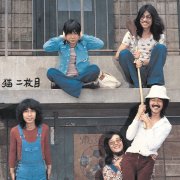 |
Nimaime (1973, 40.04) **½/T |
|
| Hirusagarino Machi Kaze Shisu Ekubo no Uta Shinkon Hakusho Hikoujou Unga no Aru Machi Chiisana Misede Koi Wa Koi |
Kiss Hitori Niwa Shinaiyo Hanayano Aru Toori |
|
Current availability:
Mellotron used:
What can I tell you about Neco? That their name means 'cat'? A Japanese five-piece, 1973's Nimaime (Second Piece, being their second album of four) is a folky pop/rock record, better tracks including the rockier Unga No Aru Machi and the glam rock of Hitori Niwa Shinaiyo (this was 1973, after all).
Hiro Yanagida and Seo Kazumi play Mellotron, with chordal flutes under a melodic line on Ekubo No Uta and big chordal strings on Chiisana Misede, quite distinct from the real strings elsewhere. As with so many similar, shame it wasn't used a little more, but there you go.